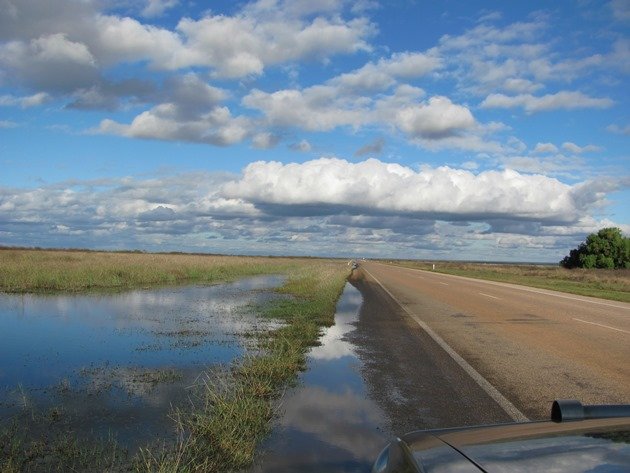
Broome is officially in its Dry Season, but that does not necessarily mean that it will not rain. In fact this June was the wettest on record since records first began in 1894! In one day we had 139mm of rain and all of a sudden there was water everywhere. The main highway south was closed for some time and the supermarket shelves soon started to look empty and those holidaying in caravans were wondering why they had headed north for the sunshine. Thankfully it did not last long and then brought some surprising birding opportunities that we normally only experience in our Wet Season.
If you head out of Broome and take the road south there is a large open plains area that is always rewarding for birdlife. We made a trip to see what was there and we were pleasantly surprised. You could not leave the road due to the flooded land, but there was sufficient room to pull right over and observe the birdlife. Of significance were the large number of White-necked Herons, which had taken to balancing on fence-lines, gates and any raised growth due to the flooded land. We counted over three hundred of these birds within easy view and no doubt there were many more. The raised lumps on the horizon are termite mounds!
White-necked Herons balancing on the fence and in the water
White-necked Herons and distant termite mounds
The fence-lines were also good roost sites for the many Whiskered Terns and the majority of the ducks in the deeper water were Pacific Black Ducks and Hard Heads. Grey Teal roosted around a dam alongside Black-fronted Dotterels and Red-kneed Dotterels and Australian Pratincoles were well-camouflaged amongst the cattle.
Whiskered Terns on the fence-line and ducks in flight
The eastern side of the highway was significantly more flooded and there were Glossy Ibis present in the shallower water alongside Black-winged Stilt. On the western side we had the pleasure of observing a pair of Australian Bustards walking through the shallow water collecting food as they went.
Australian Bustards
The number and variety of raptors was impressive with Brown Falcons, Black Kites, Whistling Kites, Australian Hobbies, Nankeen Kestrels, Spotted Harriers, Swamp Harriers and Black-shouldered Kites easily observed. They were hunting across the plains and being rather successful due to the sudden influx of prey.
Brown Falcon 50 kilometres from Broome!
Brown Falcon
Australian Hobby
 Nankeen Kestrel and a pair of Black-shouldered Kites
Nankeen Kestrel and a pair of Black-shouldered Kites
There was a small flock of Brolga on the far side of the plains and there were numerous martin species flitting amongst the birds. Over 45 species of birds were observed in this small section of flooded land and no doubt there were others that were not observed!
Brolga
Brolga and martin species
As the land dries out over the coming weeks we hope to venture out that way again and see the changes in the landscape and the birdlife. Anyone heading to Broome from the south can observe this spectacle as they head towards town.


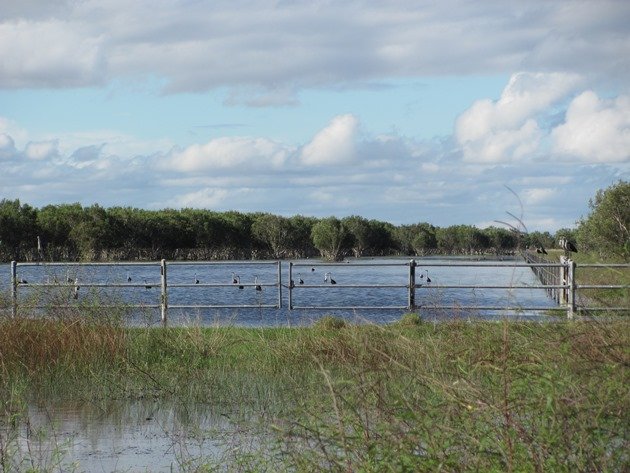
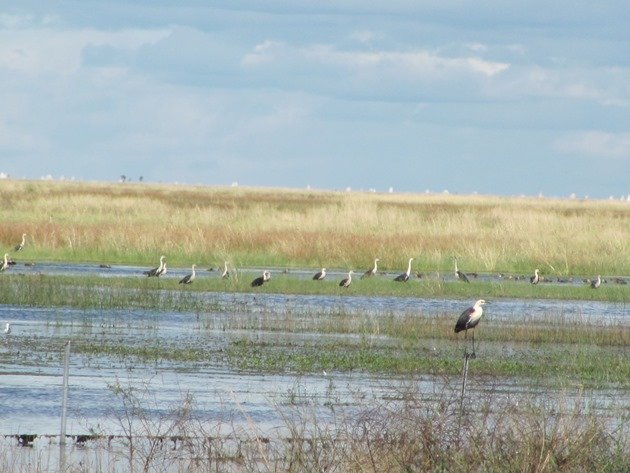
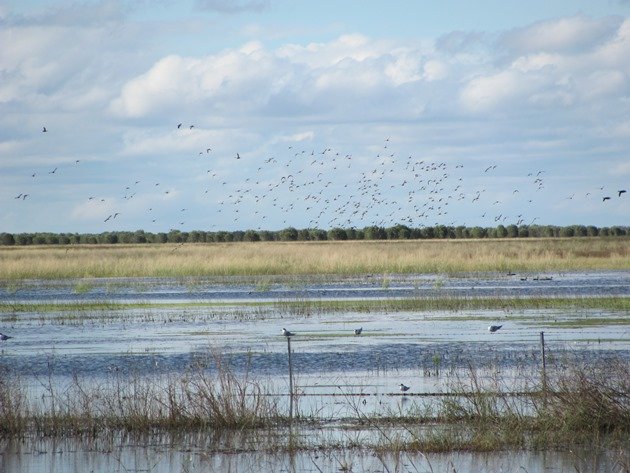
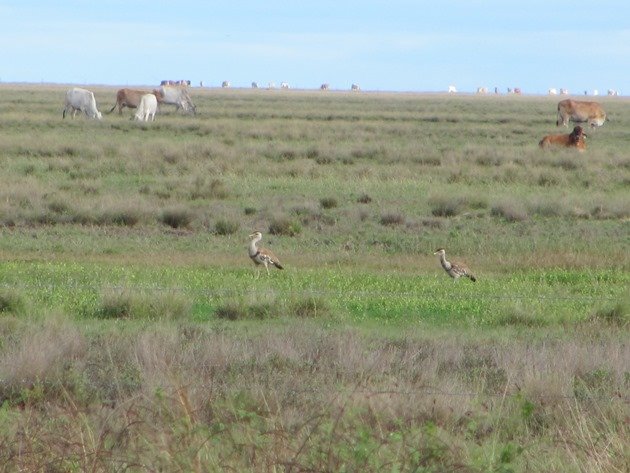

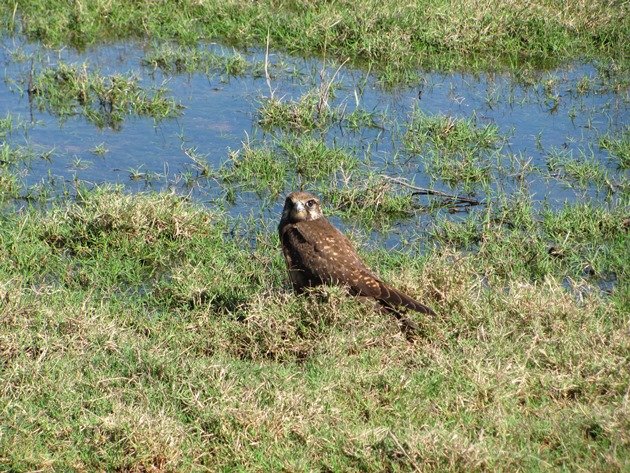
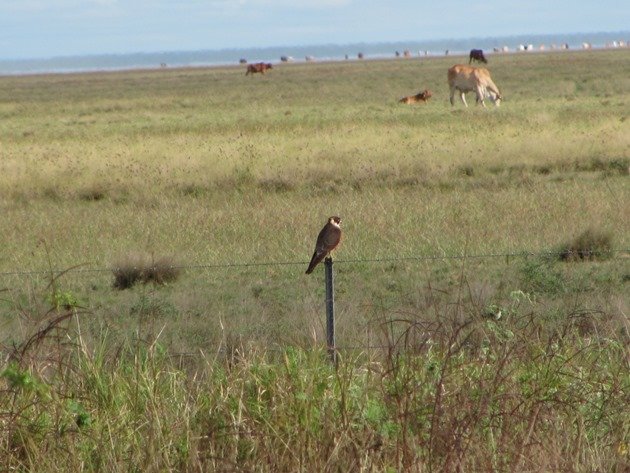
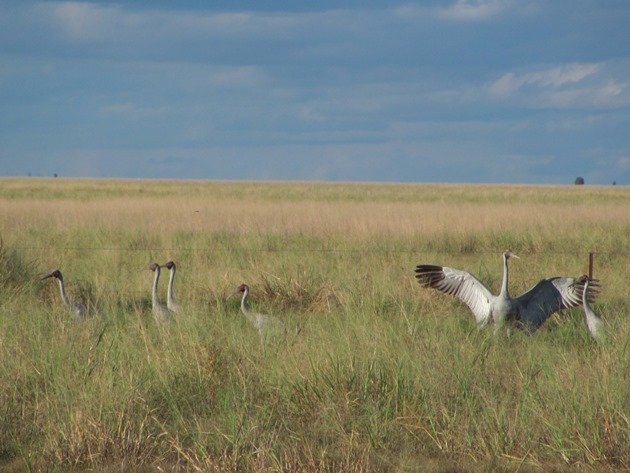
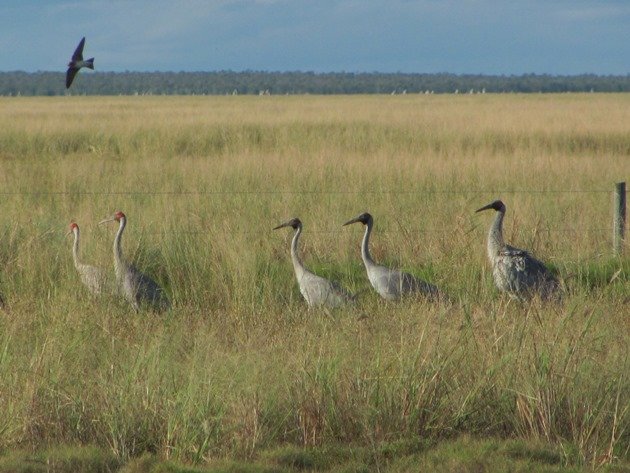
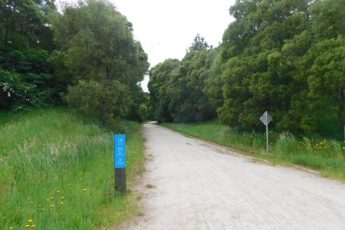


 New writers welcome – please contact us for details.
New writers welcome – please contact us for details.

















Wow, I am always loving the species you have Clare. I will have to start saving soon but for now I am over spent with my travels in South America.
Thanks…we also need to save for South America! There are so many birds all over the world awaiting us all!
We’ve been getting lots of rain in New York this summer. Does that mean I am soon to see a Brolga?